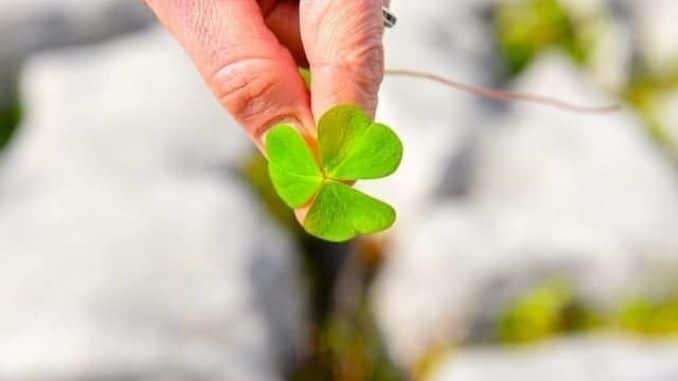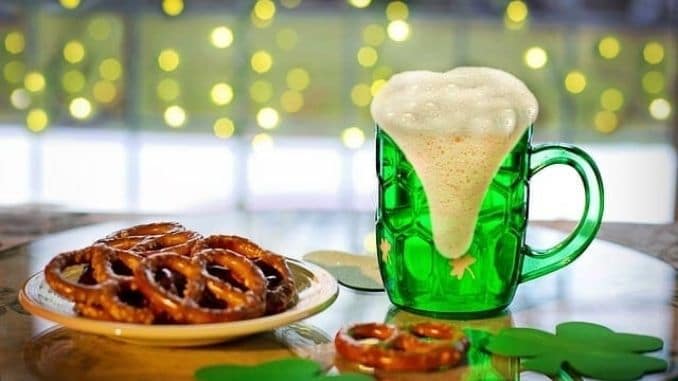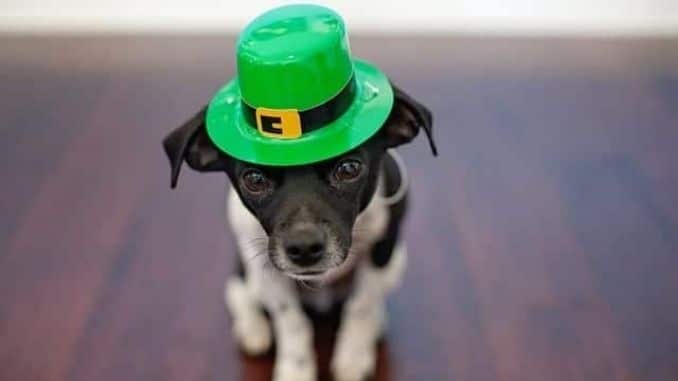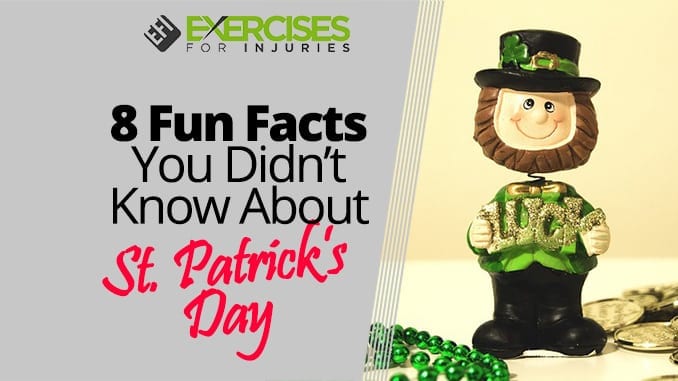
March 17 is the anniversary of the death of Saint Patrick, the patron saint of Ireland. Since about the 10th century, the Irish have observed the Roman Catholic feast day of St. Patrick on March 17. But it wasn’t until 1762 that something like our modern-day St. Patrick’s Day celebration occurred in the United States. In this article, we will be discussing about the fun facts about St. Patrick’s Day.
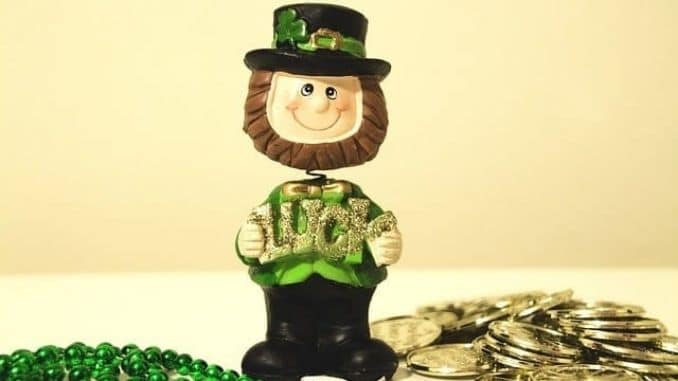
That year, Irish soldiers serving in the English military marched in a parade through New York City. After which Irish pride flourished among American immigrants. In 1848, New York City held its first official St. Patrick’s Day parade, made up of members from several Irish Aid societies. Today, the New York parade is the oldest civilian parade and the largest in the country.
You may enjoy dressing in green and giving out greeting cards filled with shamrocks and leprechauns. And enjoying a general sense of merriment on St. Patrick’s Day. But there is much more to this holiday than you may know.
8 Fun Facts You Didn’t Know About St. Patrick’s Day
Below we’ve got eight fun facts about St. Patrick’s Day, which may help add even more joy to your March 17, whether you’re Irish or not.
1. Chicago Turns Its River Green
New York may have started the St. Patrick’s Day parade. But Chicago gave the holiday its own flavor by turning their river green. In 1962, pollution-control workers who worked with dyes to detect toxins in the water, realized they could use those dies to celebrate St. Patrick’s Day. So, they released 100 pounds of green vegetable dye into the river, turning it green for several days.
Today, Chicago continues with their tradition but, to protect the environment, they use only 40 pounds of dye.
2. The Shamrock Has A Religious History
Shamrocks are seen everywhere on St. Patrick’s Day, which may make you wonder why they’re associated with the holiday. The story goes that St. Patrick used the three-leaved shamrock to explain the Trinity: the Father, Son, and Holy Spirit. Some people also say that the three leaves represent faith, hope, and love. The religious lore about the Saint wraps up the shamrock and it remains a prominent part of St. Patrick’s Day celebrations today.
In the 19th century, the Irish people wore the plant itself as a sign of rebellion against the English Crown, making it an even stronger symbol and the national flower of Ireland. It’s also long been a charm against evil, similar to the four-leaf clover. Native to Ireland, the shamrock plant is a stem-rooting perennial that occasionally grows a four-leaf clover.
3. There Wasn’t Always Alcohol
Although modern-day St. Patrick’s Day celebrations typically involve alcohol, the holiday was originally a religious holiday, so most participants abstained. In fact, the law in Ireland prohibited drinking on St. Patrick’s Day, leading to the closure of all the pubs. The law wasn’t changed until 1970.
Today, green beer is one of the most popular drinks to enjoy on March 17, with 13 million glasses of Guinness — the popular dark stout beer from Ireland — consumed on that day.
4. Green Wasn’t Always The Official Color
When we think of Ireland and St. Patrick’s Day, we think of the color green, but it wasn’t always that way. St. Patrick usually wore blue garments, not green. In the 1500s, King Henry VIII turned the country into a kingdom, and he also chose blue as his official color.
Ireland got its coat of arms, which had a golden harp placed on a blue background. Hundreds of years later, King George III continued the blue tradition when he created a new order of chivalry for the Kingdom of Ireland, using a lighter blue color like a sky blue. Still, people have long known the country as the “Emerald Isle,” with green pervasive throughout the landscape.
There were historical uses of green too, such as that used in the green harp flag that stood for the Irish Catholic Confederation back in the 1640s. The present-day Irish flag also includes green, white and orange (but no blue). However, green became the Irish color most prominently in the late 18th century, when the Irish began to rebel against the English, and thus the color blue became tainted as an “English” color.
The 1978 Irish Rebellion against British rule marked the firm adoption of green as the official color of the country. Irish soldiers also sang the tune, “The Wearing of the Green” during the rebellion, making it clear their separation from the English blue. Today, 83 percent of Americans wear green on St. Patrick’s Day.
5. Leprechauns Actually Work Hard
You may imagine leprechauns simply flitting about the green hills of Ireland guarding their gold, but these mischievous creatures work hard making shoes. They are part of the fairy-folk legends of Ireland, mythical beings who were humble cobblers, which in the fairy world is a lucrative profession — thus, the pots of gold.
The traditional story we’re all familiar with says that if you catch a leprechaun, you can barter his freedom for his treasure and end up rich yourself. However, the original leprechauns were not very nice, with a reputation for deception and mischief. Early depictions of them showed not the smiling happy fairies we see today but, rather, a group of mean-looking creatures who stingily hid away their treasures.
Leprechauns were also supposed to be partial to the alcoholic beverages and to haunt Irish cellars stealing away wine and beer.
6. Corned Beef And Cabbage Originated In U.S.
If you go out on St. Patrick’s Day, you’re likely to find corned beef and cabbage on the menu. You may even order it to celebrate the day. However, if you go to Ireland on St. Patrick’s Day, you will be hard-pressed to find this dish anywhere.
In history, people used the cow more for its strength in the fields and its ability to produce dairy products than for meat. Beef was not part of the diet for more Irish people. In Ireland, people prefer and continue to enjoy the pig as a popular meat. It was when the English conquered the area that beef became more prominent as the British had long been a beef-eating culture.
The Cattle Acts of 1663 and 1667 prohibited the export of live cattle to England, which flooded the Irish market with beef and lowered the cost. The Irish used salt to cure the meat and since their salt tax was significantly lower than that in England, the country became the hub for salted meat production. The Irish could also use high-quality salt, so their salted beef gained the reputation of being the best. The large salt crystals used to cure the meat gave the name “corned beef,” with the crystals being about the size of corn kernels.
Ireland soon started exporting their corned beef to Europe and America, where it became very popular. Meanwhile, the Irish themselves often could not afford it, and when they could, they were more likely to choose salted pork.
Irish immigrants in the U.S. were influenced to eat more beef, and, oddly enough, they usually could afford corned beef. By that time, however, it wasn’t from Ireland as the demand and production declined after the 18th century. They bought it from Jewish kosher butchers instead. Ireland had produced a different corned beef. The chef made it from brisket, which is a tougher cut, and then salted and cooked it to become the tender meat we know today.
On March 4, 1861, President Abraham Lincoln chose the dish for his first inaugural luncheon. If you go to Ireland on St. Patrick’s Day, however, you’re more likely to find them celebrating with lamb or bacon.
7. Many Americans Are Of Irish Descent
Currently, there are an estimated 34.7 million American residents with Irish ancestry, which is seven times more than the actual population of Ireland. Although German is the most frequently reported, Irish is the second most reported ancestry.
There are 54 counties in the U.S. where Irish is the most common ancestry, including Middlesex and Norfolk counties in Massachusetts. Irish also is among the top five ancestries in every state except Hawaii and New Mexico.
Look around and you’re also likely to find areas all across the country that hearken back to the Emerald Isle. The Shamrock has seven places named after it, including Shamrock, Texas, and Shamrock, Oklahoma. 16 places are named after Ireland’s capital, Dublin, including Dublin, California, and Dublin, Ohio. During the past 100 years, people in the U.S. have given the name “Patrick” to about 650,000 babies, and they have named more than 450 churches in the country after Saint Patrick.
8. The ‘Pinching’ Tradition Came From The Leprechauns
If you’re not wearing green on St. Patrick’s Day, you could get pinched. This is one of the fun facts about St. Patrick’s Day Where did this tradition come from? It’s a strictly American tradition based on those mischievous leprechauns. The story goes that those who wear green are invisible or otherwise protected from the leprechaun’s antics while those who don’t are vulnerable to whatever tricks the leprechauns might choose to play on them. A pinch is a reminder to beware and get on some green before you fall victim to a mean leprechaun prank!
Oh, and by the way, if you’re pinched incorrectly, and you are wearing green, you are then free to pinch the pincher 10 times to balance the score.
For more recipes and dinner ideas, pick up your free copy of the St. Patrick’s Day Cookbook, here!

